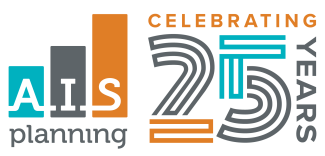Seven Ways To Reduce Debt
Submitted by AIS Planning on October 10th, 2017
Most workers today report financial stress due to credit card debt and lack of enough money in savings. Here are 7 steps toward debt reduction.
Take stock of your debt – make a list of all your monthly credit card and loan payments. For each bill, list the total amount owed, minimum required monthly payment and the interest rate being charged.
Determine how much you can pay. Add up all of your household monthly expenses and the minimum payment of your debts as well as any other spending on clothing & entertainment. Subtract this total from your monthly income – the remaining amount is what can be used to pay down more debt.
Pick up the phone – call lenders and explain your situation. It is possible you can negotiate a lower interest rate.
Start with one targeted bill – focus either on the debt with the lowest balance or the highest interest rate. If you start with the lowest balance and pay that off – you have created a quick success and can now use dollars allocated to that bill to pay off another debt.
Chart a payment path – paying the monthly minimum on each debt. The exception is to put any extra dollars toward ONE debt to pay it off faster. This exercise removes your debt one by one – giving you the ability to put more and more money toward each remaining bill.
Get creative by using any extra income to pay off debt. Have a garage sale, consider a second job or use your annual tax refund to pay off debt.
Break the cycle. As you start to escape debt, it is tempting to reward yourself with purchases, such as an expensive dinner or something new. Think about how you can do those things by saving first and paying with cash versus credit.
Funding Your Emergency Savings Account
Submitted by AIS Planning on October 9th, 2017
Even though we all know unexpected expenses will occur – if you don’t have an emergency savings account, you are not alone. 64% of Americans don’t have enough to cover a $1000 Emergency. Emergencies can send your family into financial crisis. Even relatively small costs like losing your cellphone, veterinary bills or paying to have your furnace fixed can throw off your monthly budget.
How To Budget For the Holidays
Submitted by AIS Planning on October 8th, 2017
Once again, Christmas is just around the corner for - but have you been planning for it? And what about the other holidays coming up before Christmas, like Halloween and Thanksgiving. If not, here's a few tips to help you get started.
A happy holiday season starts with having a budget to ensure you don’t have credit card debt that lasts well into the New Year. Be financially ready when these celebrations arrive by having a serious spending plan in place.
What Are Your Financial Goals?
Submitted by AIS Planning on May 8th, 2017
Last month we had the opportunity to launch a financial wellness program to an industrial company of approximately 90 employees. There were 80 employees present and our goal was to gain the interest of at least half the group. This was an optional benefit being offered to hopefully help the employees establish goals and give them tangible ways to achieve them. No one likes getting to the end of the month and wondering where their paycheck went, yet that is the norm for many of us. The way out of that scenario is pretty basic: have a goal, have a budget, stick to the budget. But that's usually easier said than done. By offering this program we strive to make each person's goals entirely realistic.

